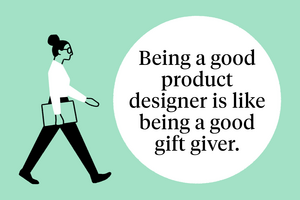Marketing Apr 3, 2020
When Building Your Brand, First Find Your Purpose
A conversation with the CMO of online bank Ally about staying committed to your company’s purpose as the organization grows.

Michael Meier
It’s rare for an established business to rebuild its brand from scratch. But sometimes opportunity presents itself in unusual ways. For Ally, rebooting after being spun off from its parent company gave it the chance to delve into what customers didn’t like about banks and use that as the foundation for a new brand and a new sense of purpose.
Finding one’s footing as a spin-off company is never easy, but Ally was trying to do so into the greatest economic headwind in generations: the Great Recession. With capital markets tight and little liquidity at their disposal, Ally CMO Andrea Brimmer and her colleagues nonetheless set about building a consumer bank for the 21st century. Its guiding philosophy? “The world didn’t need a new bank,” explains Brimmer, “but it certainly needed a better bank.”
Brimmer sat down with Eric Leininger, adjunct professor of executive education and codirector of the Kellogg Chief Marketing Officer Program, to discuss finding your purpose as a brand, letting that purpose permeate the company culture, responding to the coronavirus crisis, and keeping an underdog mentality even as your company grows.
This interview has been edited for length and clarity.
Eric Leininger: Why was Ally founded? Did you have a purpose at the beginning or did your purpose emerge as time went on?
Andrea Brimmer: The company was born out of consumer need.
It was a really small group—about 10 of us around the table. We approached our business proposition not as business people and not as marketers, but as consumers, and we asked: What is every single thing that we hate about banking?
We looked at 24-7 service, which didn’t really exist prior to Ally. We made hard and fast rules around transparency and disclaimers and speaking to people in plain language, because a big part of the way that banks make money is through customers who are uneducated about finance. We changed our entire model of how we compensated people in the call centers based on their ability to resolve a customer’s problem in the first touch. Our purpose became being a relentless ally for our customer.
The interesting part is how entrepreneurial in spirit it was. We were almost a hundred-year-old company that was largely behaving as a startup.
The iPhone was literally just being launched: smartphone penetration at the time was only 20 percent. So this idea that people were going to bank in the palm of their hand was pretty radical at the time. There was quite a bit of convincing we needed to do because people weren’t comfortable sending their money to this amorphous place on the Internet. So we purposefully crafted our brand to make people comfortable with this new way of thinking about banking.
It was a big step. But I think the beauty of it was, it was the only way forward for us because we didn’t have the time or liquidity to buy or build branches. So we went all in on this idea of the digital orientation of financial services. And it’s obviously a bet that’s paid off.
Leininger: From those 10 people around a table to 8,500 employees now, how have you sustained this purpose as the organization has scaled? Typically, companies become more bureaucratic as they expand to this size. The front-line employees who deal with customers and the most senior managers lose touch with one another, and everyone loses touch with the clarity and simplicity of the original purpose.
So different companies have different ways of developing and maintaining this sense of purpose. The tech company SAP, for instance, chose to align its purpose around its employees’ stories.
Brimmer: While we’re a decent-size company, we aren’t so big that you can’t be highly connected, particularly as a leadership group, to the mission and the day-to-day decisions we make as a corporation.
And that brand belief system—that we are an ally for our customers—has really permeated throughout the entire organization. And a lot of it is because we’ve never lost that scrappy underdog mentality. The customer sits in the room with us in every meeting that we have. We start every meeting by reading a customer letter and reminding ourselves why we do what we do. Our CEO, Jeff Brown, often reminds us that this money is exceptionally personal to them and they’re entrusting us with their most important asset and we have a responsibility to take good care of that.
As a result, our purpose factors into all of the decisions that we make, particularly as we’re growing and adding new products. For instance, since we’ve launched, we’ve added a mortgage capability.
Leininger: Your brand purpose grew out of one financial crisis and is now functioning in the midst of another. How is your purpose manifesting itself in the current situation with coronavirus and the financial markets? What specific actions have you taken on behalf of customers?
Brimmer: This has been an opportunity to put Ally’s mission to be a true ally to its customers, employees, and communities into practice. We recognize there has never been a more critical time to deliver on our promise to “do it right,” and we are committed to supporting the people we serve through this crisis.
We’ve taken a number of steps to support our customers, communities, and all stakeholders to bolster peace of mind and help safeguard their long-term financial well-being. This includes deferring payments for our auto- and home-loan customers as well as waiving fees at Ally Bank and Ally Invest.
“We recognize there has never been a more critical time to deliver on our promise to ’do it right,’ and we are committed to supporting the people we serve through this crisis.”
— Andrea Brimmer
We’ve pledged $3 million to help address the emergency needs of our communities with emphasis on our main business centers, Detroit and Charlotte. I’m also incredibly proud of the way we’ve really gone above and beyond to show support to our 8,500 employees and their families during this stressful, scary, and uncertain time.
You can’t call yourself an ally and not be ready to step up when crisis hits. I think we’ll emerge stronger from this crisis just as we did from the last one.
Leininger: If a leader was struggling to create a purpose statement to galvanize their organization, what advice would you give them?
Brimmer: The purpose has to be authentic and it has to be rooted in what your company does. For example, we’re a bank. Our purpose has to be rooted in finance—it can’t be that we’re the company that saves the whales. While that’s an admirable pursuit, it has nothing to do with why people want to do business with us.
And your purpose has to remain consistent. It can evolve, you can add aspects to it, but holistically changing your purpose is very confusing both to the enterprise that needs to bring it to life, to your associate base, and to consumers.
Leininger: That’s a great answer. We see many companies struggle with this by making their purpose too complex. Or, they make it so elevated that it could apply to many businesses. Our former dean, Sally Blount, writes in Harvard Business Review that companies seeking to articulate their purpose should place their emphasis on clarity, relevance to customers, and the ability to differentiate from competitors. Ally’s purpose really seems to be aligned with that guidance.
Can you talk about the distinction between purpose and corporate social responsibility? How does Ally view CSR?
Brimmer: CSR should be related to purpose. Our strategy around CSR is that as a bank, we have a responsibility to help change the trajectory of people’s lives with regard to their financial abilities and stability. By that we mean helping make people financially literate, but also taking it one step further.
For example, we partner with the historically black colleges and universities through the Thurgood Marshall College Fund on what we call a “weekend of learning.” We brought 50 students to Detroit and gave them the challenge to use technology to solve an issue that the city is facing.
A number of Ally employees spent the weekend mentoring these students, honing their projects, which the students then presented Shark Tank–style. We selected three teams as winners. Our CEO was so impressed that he ended up offering internships at Ally for all 50 students. Fast forward to today, and five of the 15 who joined Ally as interns have accepted full-time positions and we’ve got some returning as interns again this summer.
So what started as a marketing and CSR program opened up this huge pipeline of diverse talent. I think that a lot of companies would have ended up just writing a check and walking away. But our purpose and our CSR strategy are so tightly aligned that it was a great brand moment for us to be able to rally around the ethos of what we are all about.
Leininger: At McDonald’s we used to say, “you can’t distract people with shiny objects—and you shouldn’t try to” in CSR. For example, there was a time when Walmart decided their CSR was going to be about sustainability when their corporate CSR issues were not about sustainability. Critics of the company wanted them to focus on wages, working conditions, and how women employees were treated. Until Walmart pivoted onto actions that were at the core of their business, they were getting viewed cynically in CSR circles. Interestingly, public opinion eventually caught up with Walmart’s original focus on sustainability. And Walmart’s Environmental, Social, and Governance Report demonstrates real progress on these matters. Yet, they do not seem to receive credit in the general-business-press rankings of most sustainable companies.
So purpose and CSR can go wrong, or the timing can be off. How do you manage these potential concerns?
Brimmer: A challenge that many CMOs have is that they are held to stringent KPIs. But the marketing of your purpose and your CSR strategy will never have a straight line to a distinct ROI. What you have to do as a CMO is align your business partners—as well as your CFO and your CEO—on the importance of talking about purpose and CSR.
I’m fortunate because our CEO believes that it is part of our responsibility as citizens of the world to do the right thing. This manifests in how we give employees what we call “volunteer time off.” The company also does pretty healthy matches on any charitable giving.
Leininger: At a time when there’s so much discussion about how the role of the CMO is changing at such a fast pace, it would be interesting to hear how you are working to grow marketing capabilities and marketing talent within the organization. What are you looking for as you expand?
Brimmer: I hire for cultural fit first and credentials second. That’s not to say that we hire people who aren’t highly capable and intelligent, but we have such a special and important culture that if you don’t align with that culture, you just won’t be successful at Ally.
Probably the three most important things in your life are your health, your family, and your money: not just in terms of what it allows you to buy, but what it empowers you to do. We don’t take for granted the trust that the customer has placed in us for the money part. So we have to have people who both live that culture and understand how to talk about it.



